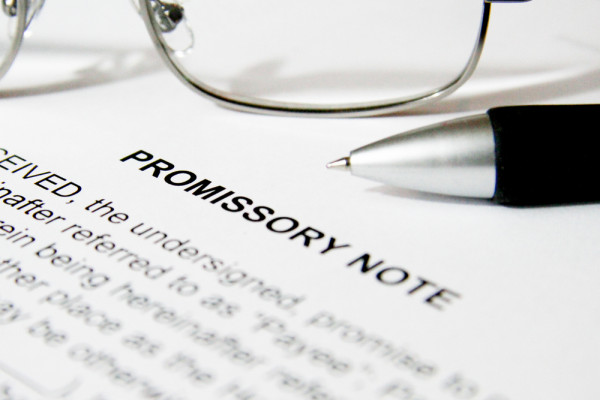What is a Promissory Note?
A promissory note is a promise to pay cash to another party in the future. A party or parties (the “Issuer”) issues the promissory note to another party (the “Holder”). The agreement can be prepared quickly under Swiss law, because the default terms of a promissory note are defined under the Swiss Code of Obligations (CO). The standard terms of the CO are intended to be fair to both the issuer and the holder of the promissory note, but they are also for situations where there are minimal obligations on the Holder and the Issuer has agreed to pay cash with few conditions. If parties want to formalize a promise-to-pay quickly and rely on the standard terms of the CO, the promissory note is fast and easy to execute. In German, the promissory note is called an Eigenwechsel.
What are the differences between a promissory note and a loan agreement?
The promissory note under Swiss law is issued by a party or parties, and has minimal obligations on the Holder of the note. The Issuer agrees to pay cash subject only to a few conditions, which is quite different than a loan agreement. A loan agreement usually has more extensive obligations on both the lender and the borrower, and is more heavily negotiated.
There are reasons why a borrower may prefer a loan agreement to a promissory note, including:
- If the value or timing of what the lender provides is not clear, in which case the borrower would probably want to use a more detailed loan agreement.
- If the lender would like to secure the payment against particular assets, in which case a loan agreement that covers security would be more suitable. The promissory note doesn’t speak to how the claim relates to other claims against the debtor’s assets, and a lender should generally assume that claims with a secured interest outrank the promissory note.
- The borrower would like to subordinate the promissory note to claims of other creditors, in which case a subordinated loan agreement would be more suitable.
Legal Information
Finally, a note on how you can use this article. This article is not to be considered legal advice and is not a substitute for advice from qualified legal counsel. If you are considering issuing a promissory note and don’t understand the default terms of the CO, you may want to consult qualified counsel. The CO specifically refers to Promissory Notes in Articles 1096-1099, but rights and obligations also depend on other sections of the CO. Although the standard terms under the CO are intended to be fair, understanding those rights and obligations will reduce the risk you take on when issuing a promissory note. Material aspects of the discussions in this article may change at any time and without further notice.

